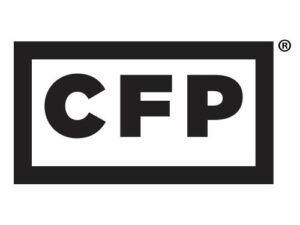By Bryan Trugman, CFPⓇ
Without a proper budget in place, investing moves further down your list of financial priorities. Before investing, you have to build out a plan for your money that allows you to save for emergencies, pay off debt, and understand how much is left over to invest. In that way, you can think of a budget as the foundation for a consistent investment strategy.
Income Minus Expenses
To know what to include in your budget, you’ll need to determine your after-tax income (net income). If you work a nine-to-five, this is the take-home pay listed on your pay stub after deductions such as state taxes, income taxes, Social Security, and Medicare.
For self-employed earners, there’s more math involved. Subtract your business expenses from your gross income, then subtract the amount you reserve for taxes. Self-employed people often have to cover two portions of Social Security and Medicare since they’re the employer and the employee. In 2023, the self-employment tax rate for Social Security and Medicare is 15.3 percent. That’s in addition to income, state, and local taxes.
Next, you’ll want to take a look at your spending habits. Pull up your bank statements to audit where you’re spending your money each month for a true representation of your expenses. Ideally, your expenses should be less than your income. Subtract your total expenses from your net income to find what you have remaining for savings, investing, and fun money.
Needs, Wants, and Savings
Budgeting is more than putting your income and expenses into a spreadsheet. You’ll also need to embrace the right attitude during this process, which calls for discipline and commitment. This begins by dividing your expenses into needs and wants. Review the purchases and expenses you’re responsible for every month, and put each into one category: needs, wants, or savings.
Needs
Needs include expenses such as your rent, car payment, utilities, groceries, or medical prescriptions. These costs should be prioritized above all else.
Wants
Wants are things you could still survive without, purchases like an expensive new handbag, extra streaming subscriptions, or a new video gaming system. Budgeting doesn’t have to be restrictive, though. You can incorporate these purchases while still trimming other areas of excess, which makes room for your investing goals.
Savings
Savings can have multiple purposes. Before investing, you’ll want to start by saving in an emergency fund, which helps you avoid detracting from your investments if you run into an emergency (e.g., car repairs, home repairs, or medical events). You could also save toward larger purchases such as a new car, home down payment, or vacation.
Budget Options
Once you’ve divided these costs into the three categories, you have a few budget options from which to choose:
- 50/30/20 budget
- 70/15/15 budget
- 80/20 rule
Each budget option sets a predetermined percentage of how much income goes toward your needs, wants, and savings. The one you choose depends on what works for your financial situation. This mainly acts as a guideline for distributing your income, and it’s not set in stone so you can adjust as you need.
50/30/20 Budget
This rule dedicates 50% of your income to needs, 30% to wants, and another 20% to savings. For example, if you make $10,000 per month, your budget would look like this:
- $5,000 on necessities
- $3,000 on experiences, luxuries, and entertainment
- $2,000 into savings
This type of budget could work well for individuals in high-cost-of-living areas whose pay is at or slightly above the median income.
70/15/15 Budget
With this budget rule, you’ll spend 70% on needs, 15% on wants, and 15% on savings. This could work well for a family that has a lower income with a high cost of living. For example, an annual net income of $50,000 would break down to:
- $35,000 on necessities per year
- $7,500 on entertainment and experiences per year
- $7,500 into savings per year
A drawback to this setup is relegating yourself to only spending a small portion of your income on things you enjoy as well as a small portion on savings.
80/20 Rule
The 80/20 rule is likely the most straightforward of the bunch. As long as you put away 20% of your income into savings, you can spend the other 80% on your necessities and wants as you wish. For a couple bringing in $9,000 per month, that equals out to $1,800 per month in savings and $7,200 to spend.
Graduate From Saving to Investing
A set method for managing your monthly income enables consistent contributions toward your investment goals. Working out a budget is an ongoing task, so you don’t have to have it all figured out right away. However, finding the discipline to reserve money for your emergency fund, personal goals, and investing goals can help you save significantly over time.
Do you need a partner to help keep you accountable for your spending habits? Or to offer guidance on progressing from saving to investing? We at Attitude Financial Advisors can help you take the next step. Reach out to me via email at btrugman@attitudefinancial.com or give me a call at (516) 762-7603 to set up a free consultation.
About Bryan
Bryan Trugman is managing partner, co-founder, and a CERTIFIED FINANCIAL PLANNER™ practitioner at Attitude Financial Advisors. With more than 15 years of experience, Bryan specializes in addressing the financial needs of new parents as they seek to realign their finances, assisting divorced individuals as they navigate an unforeseen fork in the road, and strategizing with those seeking to accrue a dependable retirement nest egg. Bryan is known for being a good listener and building strong relationships with his clients so he can help them develop a customized financial plan based on what’s important to them. He is passionate about helping his clients experience financial confidence so they can worry less and play more. Bryan has a bachelor’s degree in industrial and systems engineering with a minor in mathematics from State University of New York at Binghamton. He has served on the board of the Financial Planning Association and continues to be actively involved in the national organization. He is also a member of the Plainview-Old Bethpage Chamber of Commerce and has served as its vice president and as a board member. When he’s not working, you can find Bryan on the ballroom dance floor or engaged in a fast-paced game of doubles on the tennis court. To learn more about Bryan, connect with him on LinkedIn. Or, watch his latest webinar on: How Much Is Enough? A Surprisingly Simple Way to Calculate Your Retirement Savings Needs.



